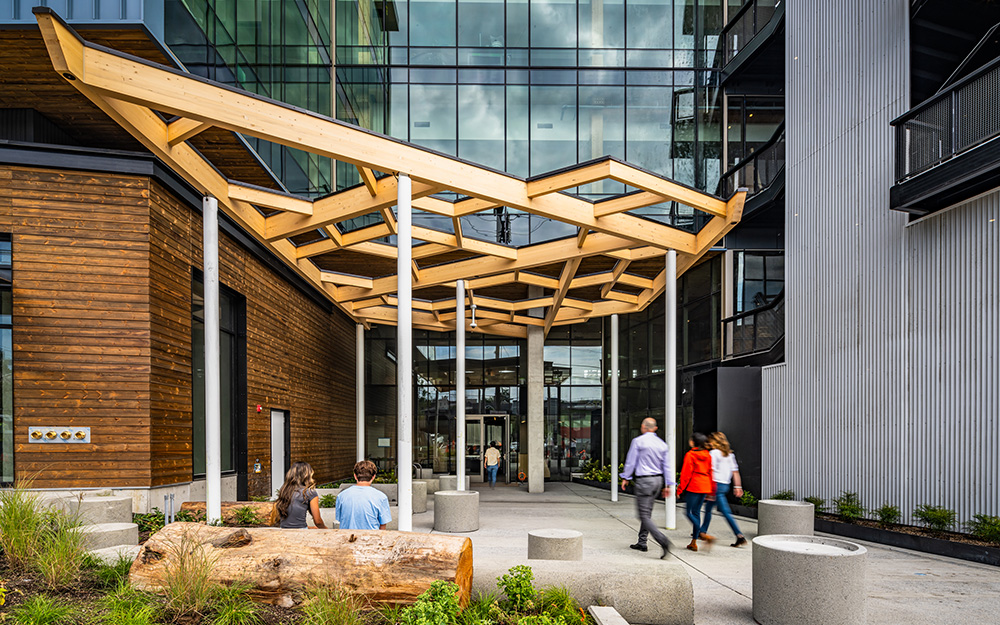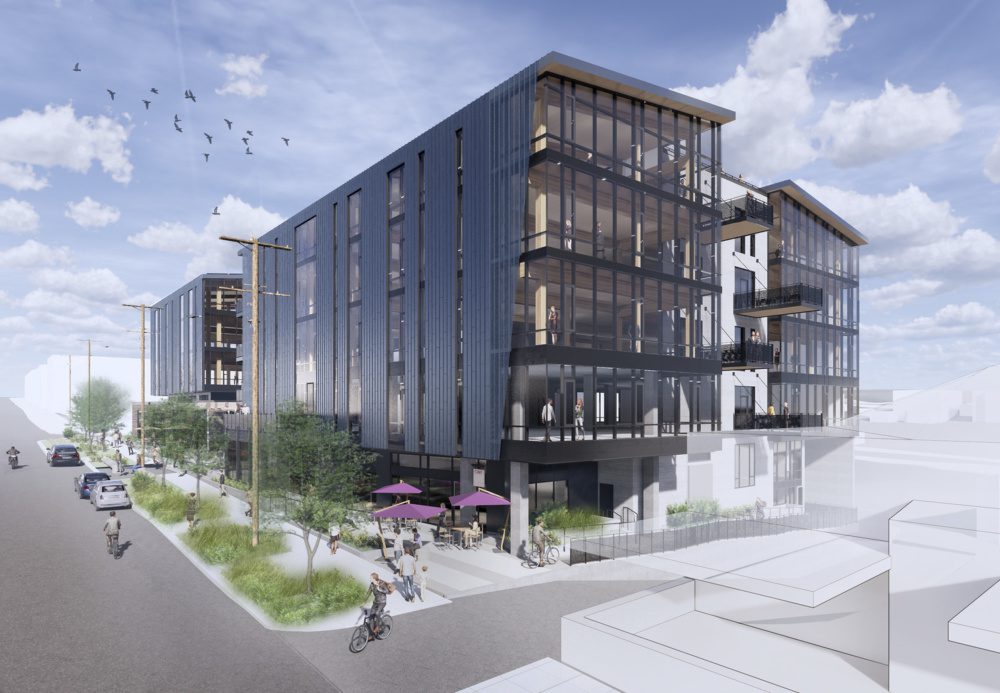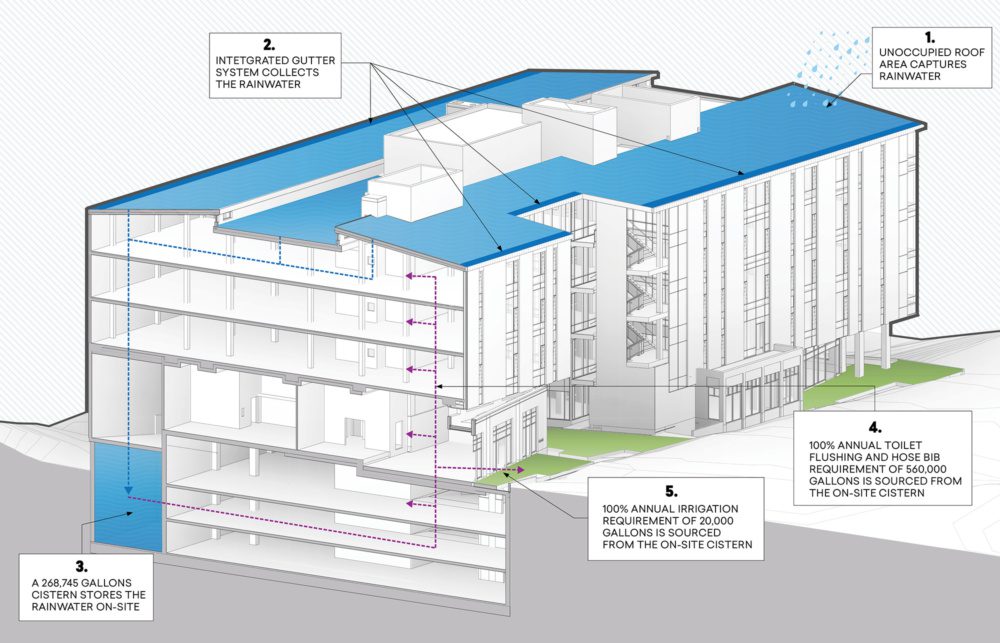
Ordinary? Not quite.
35 Stone, a mixed-use mass timber commercial office building, is tackling the multifaceted challenges of climate change, water equity and resiliency head on.
Shaped by the ownership’s vision of integrating sustainability with outdoor culture and lifestyle, the project is one of 13 projects across the city of Seattle pursuing the Living Building Pilot Program (LBPP). LBPP is an incentive program by City of Seattle offering developmental incentives in exchange for pursuing aggressive energy, water targets and Living Building Petal Certification. A challenging requirement of the LBPP water target is that no potable water can be used for non-potable uses like toilet and urinal flushing, irrigation, hose bib and water features.

35 Stone is mixed-use mass timber commercial office project in Fremont targeting Living Building Petal certification as part of Seattle Living Building Pilot Program.
When construction is complete in July 2024, the building will be independent of the municipal water supply for non-drinking water needs in perpetuity. 100% of non-drinking water used on 35 Stone will be sourced from on-site captured rainwater. A cost-effective solution as opposed to installing and operating expensive grey water on-site sewage systems.
This means that annually, 35 Stone will save 589,000 gallons of drinking water from being wasted on non-drinking water uses, translating to 35 million gallons over the next 60 years. This directly translates into a 54% reduction in water bills during the building’s operations.
Key design strategies essential in realizing this project’s water independence vision include:
Fit-for-Purpose approach
Using drinking water to flush toilets is a waste. 35 Stone adopts a ‘Fit-for-Purpose’ approach by matching the quality of the harvested rainwater to uses where its quality is sufficient. The on-site rainwater is being used for toilet flushing, irrigation, and hose bibs, applications where water treated to drinking quality levels is just not required.
Integration of culture and topography for a cost-effective solution
35 Stone’s design celebrates the neighborhood’s industrial and maritime history, with clerestory windows and a large, long sloping roof. This roof element does double duty by also working as an efficient rainwater collector.

This diagram shows how water is collected in the 268,745 gallon cistern and distributed throughout the project.
The large roof area maximizes the amount collected, while the integrated gutter system at the end of the sloped portion captures the rainwater and directs it to a monumental cistern. At 268,745 gallons, it is likely the largest on-site cistern in a market rate commercial office application in Seattle.
Instead of excavating deeper to accommodate the cistern, an approach further compounded by challenges from the site’s high-water table, the cistern was located below the vehicular ramp that connects the street to the parking garage. This approach took advantage of an otherwise unused and backfilled space, creating significant upfront cost savings associated with incorporating a gigantic cistern (large enough to fit an adult blue whale) on a small urban infill site (less than an acre).
Reducing overall water requirement
The building water demand is substantially reduced by a combination of low-flow plumbing fixtures and landscaping design strategies. Internally, pint-flush urinals (0.125 gallons per flush), 1.1 gallons per flush toilets and 1.5 gallons per minute showers were installed. Externally, native plantings in the landscape design, including drought resistant species, mitigate the water required for irrigation, contributing to overall water conservation efforts.
Reducing potable water consumption lessens the strain on wastewater systems, lowers potential costs for expanding and upgrading water infrastructure, and extends potable water availability at the neighborhood level. By integrating site specific approach to water system design, 35 Stone preserves public health, promotes water equity amongst the neighbors and supports community resiliency.